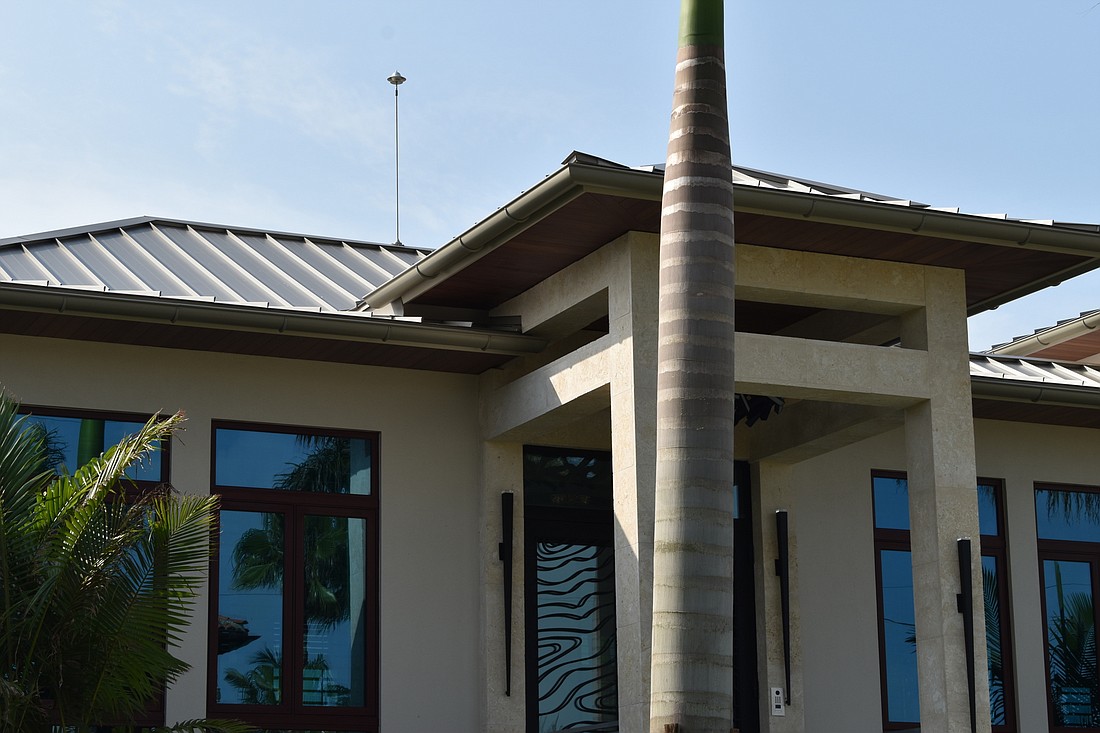- November 19, 2024
-
-
Loading

Loading

Lightning rods up to six feet in height will be allowed to extend above the maximum allowable height of single-family homes, with some restrictions.
Lightning rods are not to exceed 6 feet on single-family or two-family homes, even if they are mounted to a rooftop already 30 feet high. The lightning rods on multi-family or commercial buildings are not to exceed 16 feet.
“Given that lightning protection is primarily for the life and safety of people, and only secondarily an aesthetic matter, I believe it is incumbent on the commissioners to approve an ordinance that provides a reasonable and easily administrable height limitation for the benefit of all residential neighborhoods, which does not by the height limitation proposed have the effect of favoring or dictating one particular type of lightning system over another,” Commissioner Sherry Dominick said.
On Monday afternoon, the town commission voted 4-2 in favor of the proposal. Dominick, along with Commissioners BJ Bishop, George Spoll and Ed Zunz, voted to approve it.
Mayor Ken Schneier and Commissioner Jack Daly voted against it. Vice Mayor Mike Haycock did not attend Monday’s virtual commission meeting.
Schneier said he was in favor of allowing for a 1-foot exception to lightning rods higher than a home’s maximum height of 30 feet, which the commission initially approved on June 30.
The mayor even tried to amend Monday’s motion to go back to the initial 1-foot exception. Daly was the only commissioner to support Schneier on the matter.
“There’s a tendency, I think, today to treat issues as black or white. In the case of the proposed lightning rod text amendment we have before us, these are defined as safety versus aesthetics,” Schneier said. “I would suggest, however, there are many issues we deal with in the government, including this one, are gray.
“And that it's our responsibility to identify and consider the nuances of the matter, and to take the tough decision to reach a resolution that is fair and takes all views into account,'' he said. "In other words, compromise. I believe we struck a fair compromise at our June 30 meeting.”
The town will have a grandfathering process for existing lightning rods that exceed the proposed height restrictions. Those lightning rods may remain, but any Longboat Key residents needing to replace their systems need to abide by the current code.
“I only hope that we view it as tightly restricted to the issue at hand and not as any kind of precedent to invite further erosion of the size restrictions on which we depend on Longboat Key,” Schneier said of the 6-foot ordinance approved on Monday.
For months, commissioners have considered an application from Windemuller Technical Services Vice President John Barber to allow “lightning protection systems” to be included as an exception to height regulations. Barber’s application is on behalf of Boris Miksic and his wife Ines Tendler’s home at 640 Halyard Lane in Country Club Shores IV North.
Miksic and Tendler have insisted the lighting rods are to protect their homes.
The area around Sarasota-Bradenton International Airport experienced 12 thunderstorm days in September 2020, according to the National Weather Service. August had 24 thunderstorm days while July had 18.
Longboat Key Planning, Zoning and Building Department Director Allen Parsons said there are four types of lightning protection systems: rods, meshed conductors (derived from the Faraday cage), catenary wires and Early Streamer Emission systems.
Barber said he believes the 1-foot proposal commissioners considered would have created an unfair economic advantage toward manufacturers of Faraday systems.
“I believe it’s promoting price-fixing by creating an undue financial burden on the ESE and going through the special exception process,” Barber said.
Several members of the public spoke before the commission virtually or had written commentary read into the record on Monday.
In July, the commission heard from Dr. Vladimir Rakov — a professor at the University of Florida whose expertise is in electromagnetic and energy systems.
The town’s new regulations also limit the diameter of a lightning rod to a minimum of 5/8 of an inch and a maximum of 1 1/4 inches for single-family and two-family homes. Lightning rods are also subject to a minimum of 5/8 of an inch and a maximum of 5 inches for non-residential or multi-family residential structures.
The town code lists also height exceptions for TV antennas and church spires. There is also a special exception process for elevator shafts above the maximum 30 feet.
“I also want to point out the absurdity of allowing — under present regulation — television antennas, which are themselves lightning rods,” Spoll said.
Town Manager Tom Harmer said town staff is planning to follow up with the commission on an amendment to address satellite dishes and TV antennas.
Longboat Key's new regulations on lightning rod protection systems take effect immediately.